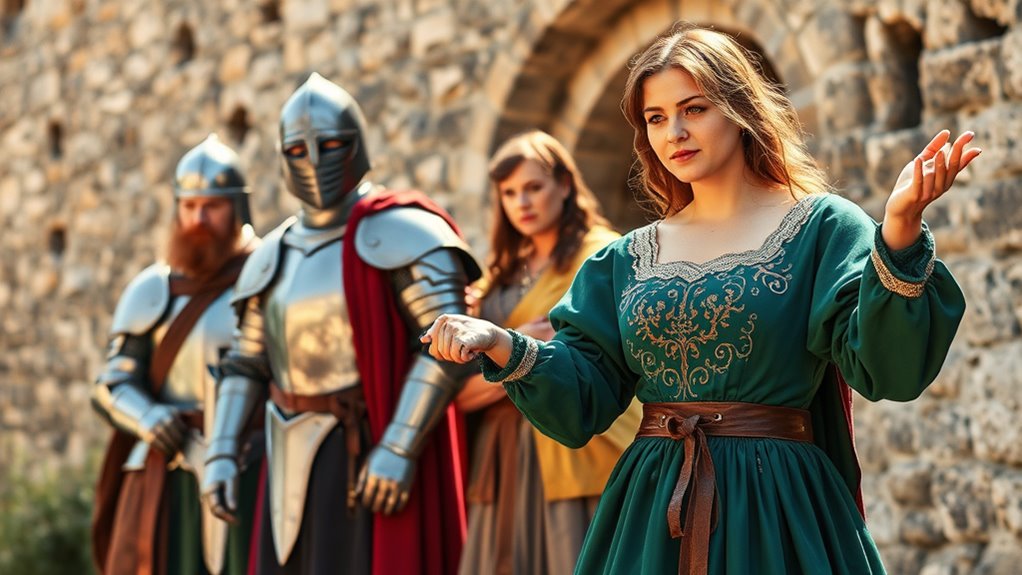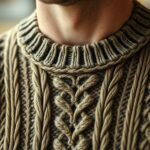What’s the thread that weaves history together? You’re about to find out.
Understanding Medieval Social Hierarchy
You’re about to plunge into a medieval reenactment, and understanding the social hierarchy is key. It’s not just about kings and queens – social mobility was limited, but possible. Religious influences played a huge role in shaping the hierarchy.
You’ll need to know your place, literally. Don’t expect to jump from peasant to noble overnight, it just didn’t happen. Understanding these social dynamics will help you create a more authentic character. Be honest with yourself, what role can you realistically portray? Don’t try to be someone you’re not, it’ll show. Keep it real, and you’ll have a blast. Additionally, being mindful of courtroom decorum can enhance your understanding of respect within social hierarchies.
Choosing Authentic Fabrics and Colors
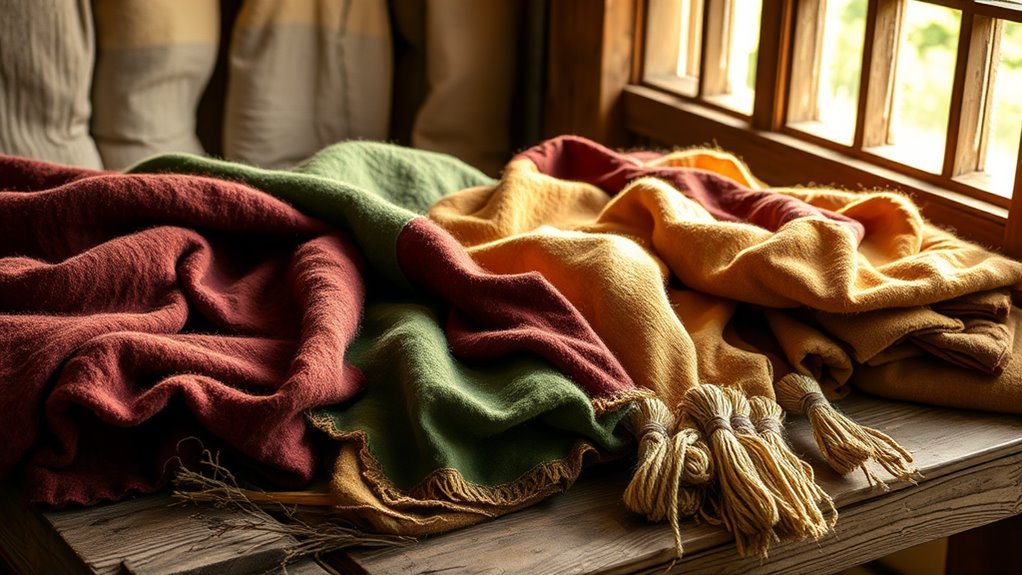
How closely will you scrutinize the fabrics and colors for your medieval reenactment outfit? You’ll want to investigate luxurious textile sources, like silk and wool. Don’t settle for cheap alternatives – they’ll detract from your comprehensive look.
Instead, focus on authentic dyeing techniques, like natural dyes from plants and insects. This will give your outfit a unique, period-accurate feel. Be honest with yourself – if it doesn’t look right, it probably isn’t.
Choose fabrics and colors that reflect your character’s social status and occupation. It’s all about attention to detail. Additionally, consider how layering techniques can enhance both comfort and authenticity in your costume.
Medieval Undergarments and Layering
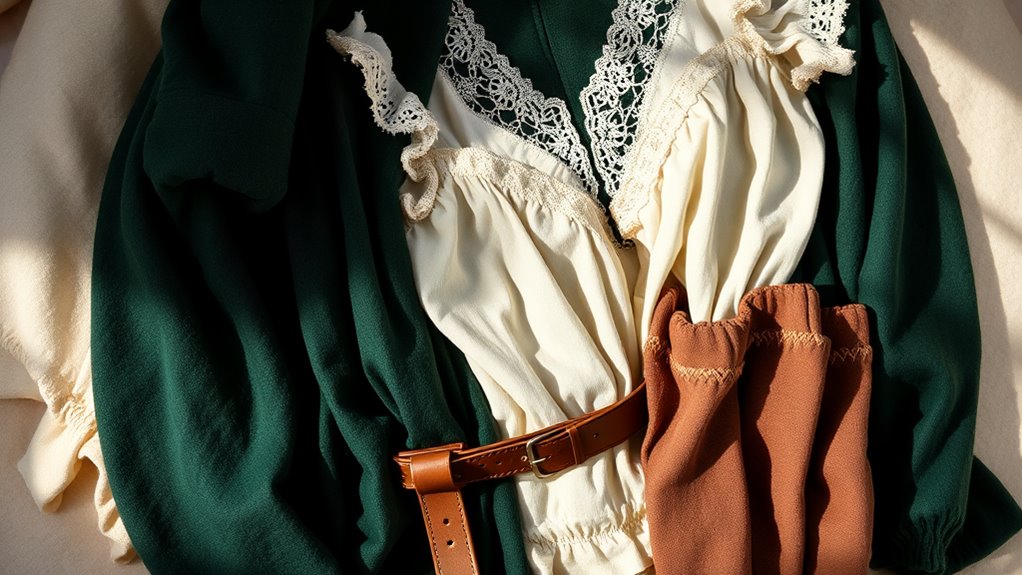
The key to a killer medieval reenactment outfit isn’t just about the outer layers – it’s what’s underneath that counts. You’ll need basic undershirts and consider hosiery options.
| Layer | Type | Description |
|---|---|---|
| 1 | Undershirt | Loose-fitting |
| 2 | Braies | Medieval underwear |
| 3 | Hosiery | Stockings or socks |
| 4 | Chausses | Tight-fitting |
| 5 | Shoes | Ankle-high boots |
Choose layers that fit your character’s social status and occupation. Incorporating the right waistline can enhance the overall silhouette, adding authenticity to your medieval costume.
Outerwear and Accessories for Men
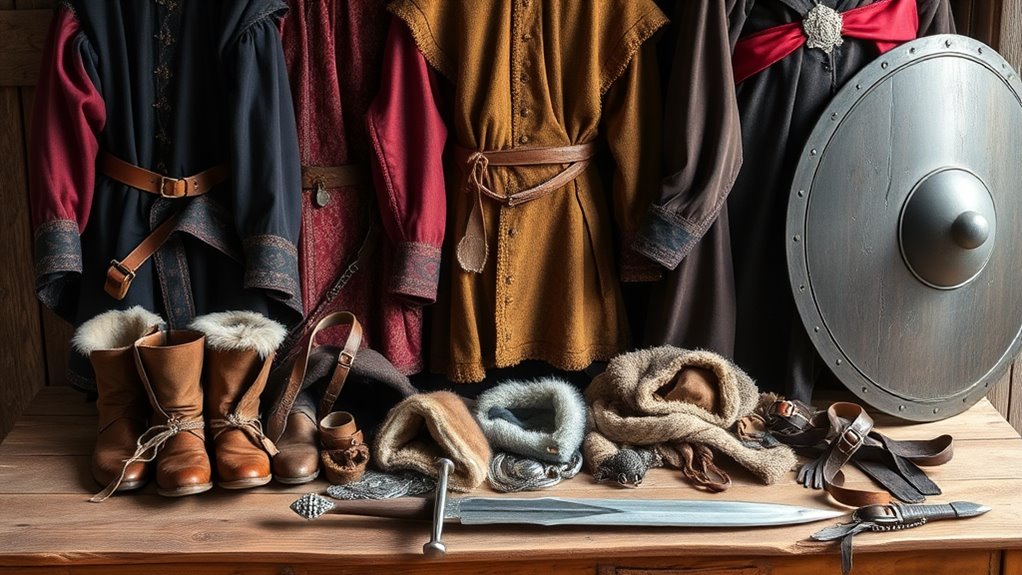
Now that you’ve got your medieval undergarments and layering down, it’s time to think about what’s going on top. You’ll want to add layered tunics and consider an embroidered cloak.
- Wear a tunic over your layers
- Add an embroidered cloak for style
- Use a belt to secure your cloak
- Top it off with a hat or helmet. Additionally, consider using breathable materials for your tunic to ensure comfort during long reenactments.
Outerwear and Accessories for Women
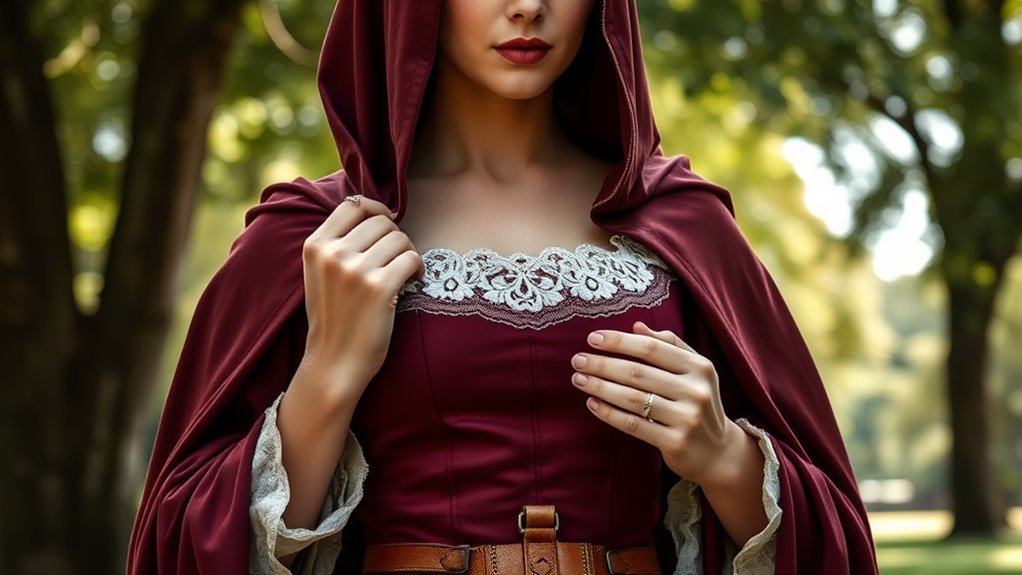
You’re about to level up your medieval reenactment game with some amazing outerwear and accessories, specifically designed for women. Consider hooded capes and warm fur cloaks for an authentic look. Additionally, incorporating thermal base layers can significantly enhance your comfort during chilly reenactment events.
| Accessory | Description |
|---|---|
| Cape | Keeps you warm |
| Cloak | Made of fur |
| Hood | Protects your head |
Occupations and Their Respective Attire
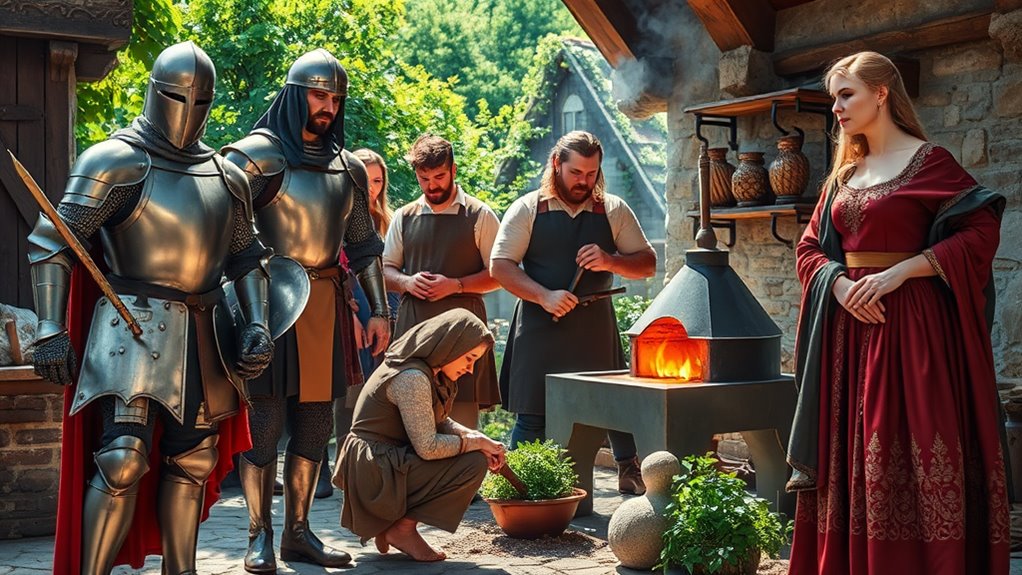
Medieval reenactments aren’t just about throwing on some clothes and pretending to be someone from the past – it’s about fully immersing yourself in a character. You’ll want to research the occupation you’re portraying.
Consider:
- Artisans and their uniforms
- Merchant guild requirements
- Social status symbols
- Regional dress differences. Don’t be afraid to get creative and add your own twist. Remember, it’s all about authenticity and attention to detail. You’re not just dressing up, you’re becoming a character from the past. Additionally, understanding cultural attire in the workplace can inform how you approach the authenticity and significance of your chosen costume.
Adorning Yourself With Medieval Jewelry and Embellishments
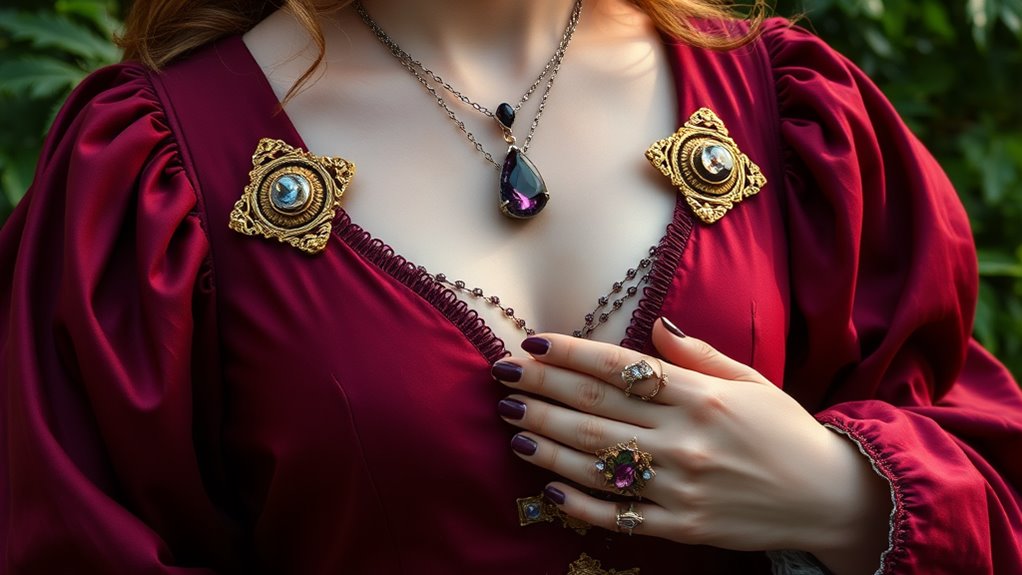
After nailing down your character’s occupation and attire, it’s time to think about the finer details that’ll make your medieval persona pop. You’re looking for elegant metalwork, like brooches or buckles, to add a touch of sophistication. Don’t overdo it, though – you’re not trying to blind everyone with sparkle.
Incorporate religious symbolism, like crosses or saints’ medals, to give your character depth. Keep it simple, yet meaningful. Avoid clichés and focus on subtle details that reveal your character’s personality. This is where you get to have fun and really bring your medieval persona to life. Additionally, remember that cultural significance behind attire choices varies widely, so consider the context of your character’s background when selecting your jewelry and embellishments.
